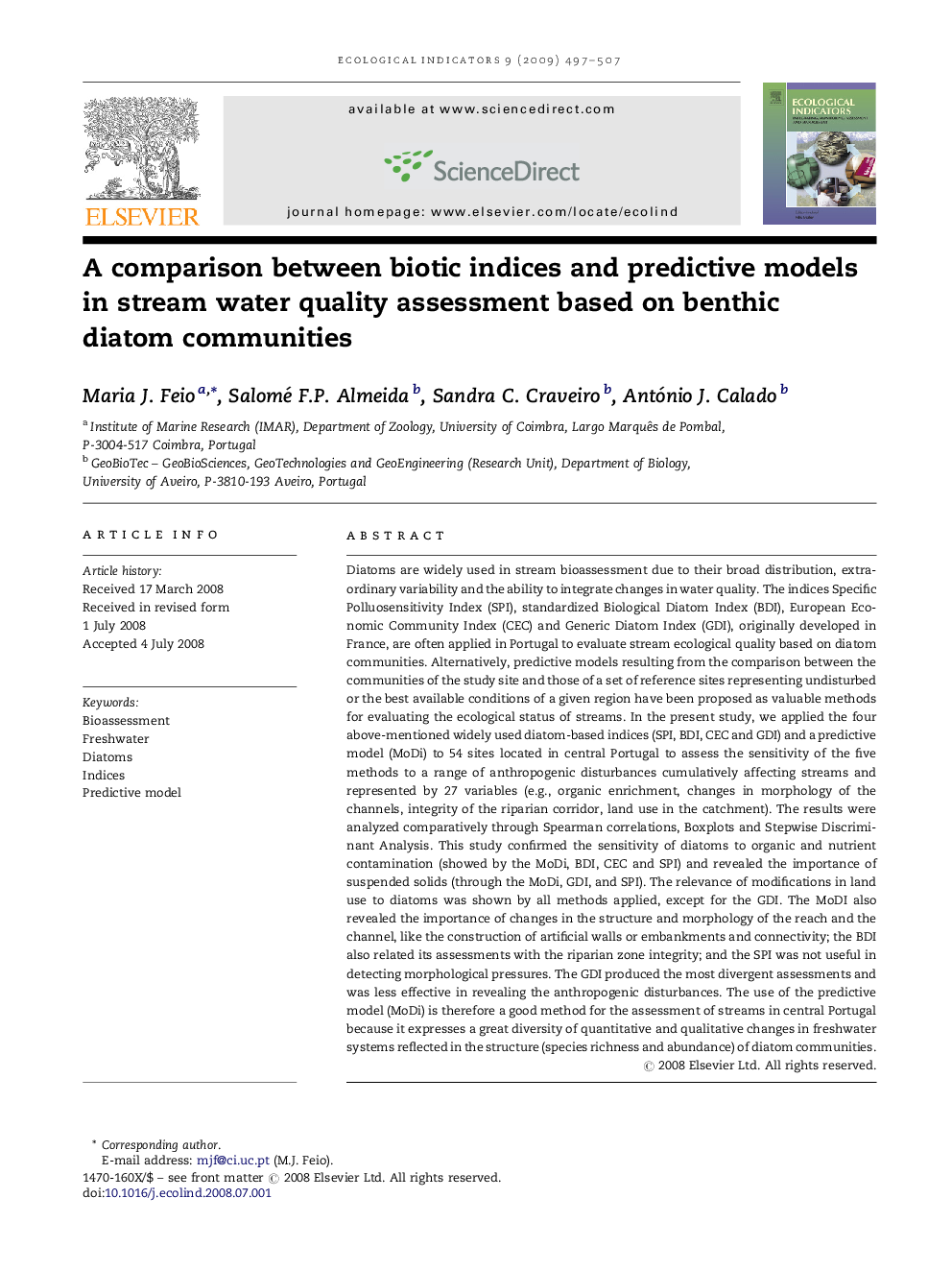| Article ID | Journal | Published Year | Pages | File Type |
|---|---|---|---|---|
| 4374469 | Ecological Indicators | 2009 | 11 Pages |
Diatoms are widely used in stream bioassessment due to their broad distribution, extraordinary variability and the ability to integrate changes in water quality. The indices Specific Polluosensitivity Index (SPI), standardized Biological Diatom Index (BDI), European Economic Community Index (CEC) and Generic Diatom Index (GDI), originally developed in France, are often applied in Portugal to evaluate stream ecological quality based on diatom communities. Alternatively, predictive models resulting from the comparison between the communities of the study site and those of a set of reference sites representing undisturbed or the best available conditions of a given region have been proposed as valuable methods for evaluating the ecological status of streams. In the present study, we applied the four above-mentioned widely used diatom-based indices (SPI, BDI, CEC and GDI) and a predictive model (MoDi) to 54 sites located in central Portugal to assess the sensitivity of the five methods to a range of anthropogenic disturbances cumulatively affecting streams and represented by 27 variables (e.g., organic enrichment, changes in morphology of the channels, integrity of the riparian corridor, land use in the catchment). The results were analyzed comparatively through Spearman correlations, Boxplots and Stepwise Discriminant Analysis. This study confirmed the sensitivity of diatoms to organic and nutrient contamination (showed by the MoDi, BDI, CEC and SPI) and revealed the importance of suspended solids (through the MoDi, GDI, and SPI). The relevance of modifications in land use to diatoms was shown by all methods applied, except for the GDI. The MoDI also revealed the importance of changes in the structure and morphology of the reach and the channel, like the construction of artificial walls or embankments and connectivity; the BDI also related its assessments with the riparian zone integrity; and the SPI was not useful in detecting morphological pressures. The GDI produced the most divergent assessments and was less effective in revealing the anthropogenic disturbances. The use of the predictive model (MoDi) is therefore a good method for the assessment of streams in central Portugal because it expresses a great diversity of quantitative and qualitative changes in freshwater systems reflected in the structure (species richness and abundance) of diatom communities.
